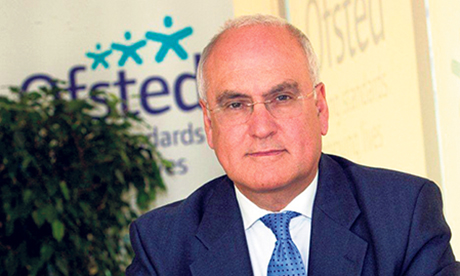Comment – Sir Michael Wilshaw’s proposal to pay school governors is a misguided initiative

Criticised: Sir Michael Wilshaw
At the end of February Ofsted Chief Inspector Sir Michael Wilshaw criticised some school governors for being “ill-informed and not able to make good decisions” and announced a new ‘data dashboard’ for schools to better inform them. He also floated the idea of some governors being paid.
I have been a governor in Hackney schools for 15 years, and neither I nor any of my fellow governors has received a penny during that period. I am proud to be one of 300,000 volunteers nationwide giving their time to support and challenge their local school.
It is not clear to me that providing a payment is the right incentive for this public duty. At Stoke Newington School we certainly haven’t found a shortage of people wanting to be governors, with 13 candidates for just two posts in our most recent election.
Sir Michael also talked about getting more governors from businesses. Again, I’m not convinced of the implied ‘private sector good, public sector bad’ viewpoint that is so common in our current government.
If I look to the experience of the City, or indeed of those private companies that supply schools, I do not find a set of skills that we especially need to help our students meet their potential.
We have had governors with corporate experience whose contribution has been very useful. But we have also had governors from high flying city firms whom we had to remove for failing to perform their duties. What we find most valuable are governors who understand the local community and represent the diversity that is present in the school.
If we want to see how to improve schools we do not need to look far. Education in London has been transformed over the last decade, with 84 per cent of schools in the capital now being rated good or outstanding by Ofsted.
Michael Wilshaw himself explained on Newsnight recently that this was due to the London Challenge, which focused on good leadership, supporting teachers and stronger schools helping weaker ones. The result is that students in London, on average, perform significantly better than those in any other part of the country.
The dashboard data are available at dashboard.ofsted.gov.uk. Simply type in the name of a local school and you can see how student progress and results compare.
This shows every single secondary school in Hackney to be in the top 40 per cent of ‘similar schools’ for the key measure of achieving five GCSEs at grades A-C (including English and Maths).
Bridge Academy top 20%
Cardinal Pole Catholic School top 20%
Clapton Girls ‘ Academy top 40%
Haggerston School top 40%
Mossbourne Academy top 20%
Our Lady’s Convent High School top 40%
Petchey Academy top 40%
Stoke Newington School top 20%
Urswick School top 40%
Yesodey Hatorah Secondary School for Girls top 40%
(The other two Hackney secondaries, Skinners and City Academy, did not have students in Year 11 last year.)
This is a remarkable picture. Ten years ago Hackney education was a national joke and many parents would leave the borough when their children neared secondary age.
The above figures show Hackney parents are now spoilt for choice, with every secondary school in the borough above average.
Indeed parents are more likely to move into the borough for secondary school and at every open evening you find parents from other boroughs trying to find out if they can get their child into a Hackney school.
The dashboard may be useful for parents but should tell governors little that is new to them.
At Stoke Newington School we have a detailed monitoring system, to ensure every student and teacher knows how well they are doing against expectations.
As governors we get detailed data on how well students are progressing in each year.
Unlike the dashboard data, which only tells what happened in last year’s GCSEs, this provides the information in time to intervene.
The irony is that the idea for this far more useful set of information came from what we saw at Mossbourne when Michael Wilshaw was headteacher there.
